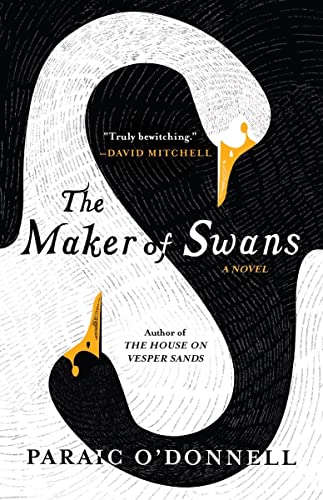The Maker of Swans
Enter into the wild and chilled world of a grand rural property, somewhere in the dim reaches of the British Isles, where three significant people reside. Holding center stage is the sardonic yet powerful and highly educated Mr. Crowe, a collector of fine books and related items, whether a pen used by the poet Shelley, opera glasses that belonged to Aubrey Beardsley, or a Shakespeare first folio. Linked to him for some unspoken reason is Eustace, a butler or “factotum,” who labors to maintain the mansion and its residents. The third, smallest but most mysterious, is a girl named Clara, whose dreams include someone resembling her, who is able to actually make a glorious and tragic being: a swan.
The Maker of Swans hints at steampunk, with its 19th-century-style social structures and strands of art and music. But it samples a deeper magic, one equally related to the powers underlying The Tempest or the deep ancient secrets of the Downs. Using two massive time jumps to structure the threats and changes, including a time when Eustace loses his family and another when Clara loses outward speech, The Maker of Swans takes Paraic O’Donnell’s mastery (he is also known for The House on Vesper Sands, his second book) to deep, heart-shaking, and frightening revelations. Brace for flame and sorcery, and a hidden order of the powerful.
O’Donnell provides a deep allegory of creation as made up of both good (life-giving) and evil. Because he reveals it through Clara’s determination to escape the bonds of adult greed and force, and Eustace’s loving grief at failing to protect her, the chapters pile up in urgency, and compel continued absorption. Think The Cherry Orchard, or The Waterworks, but British and empowered.










